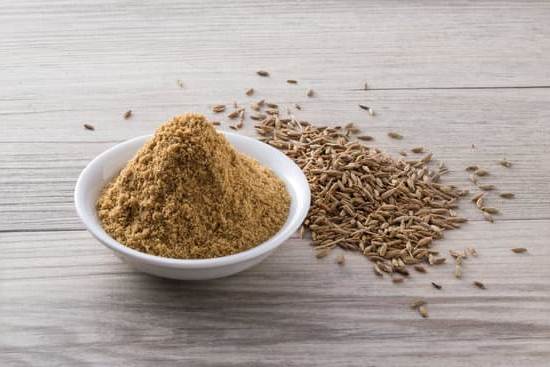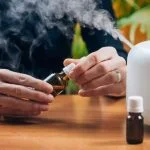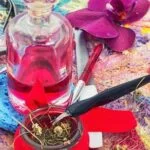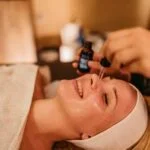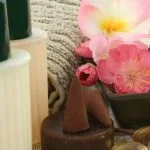Aromatherapy, the practice of using essential oils for healing and relaxation, has gained popularity in recent years for its numerous health benefits. From reducing stress to promoting better sleep, aromatherapy offers a natural and holistic approach to improving overall well-being. Incorporating free pictures of aromatherapy can visually capture the essence of this therapeutic practice, showcasing the beauty and tranquility it brings into our lives.
The history of aromatherapy dates back centuries, with roots in ancient civilizations like Egypt, Greece, and China. Over time, this art of using aromatic plant extracts evolved into a sophisticated practice that harnesses the power of nature to heal the mind, body, and spirit. By exploring different types of aromatherapy – from diffusers and massage oils to candles – individuals can find unique ways to incorporate these soothing scents into their daily routines.
Essential oils are at the heart of aromatherapy, each with its own set of benefits and uses. Popular options like lavender for relaxation, peppermint for focus, and eucalyptus for respiratory support have become staples in aromatherapy practices. By understanding how these oils work synergistically with our bodies, we can harness their therapeutic properties to enhance our overall wellness.
The History of Aromatherapy
Aromatherapy, the practice of using essential oils and plant extracts for therapeutic purposes, has a rich and fascinating history that dates back thousands of years. The origins of aromatherapy can be traced to ancient civilizations such as the Egyptians, Greeks, Romans, and Chinese, who used aromatic plants and oils for medicinal and spiritual purposes. These early practitioners discovered the powerful healing properties of certain plants and herbs, laying the foundation for what would later become known as aromatherapy.
Early Beginnings
One of the earliest documented uses of aromatherapy dates back to ancient Egypt, where aromatic substances were used in religious rituals, embalming practices, and medicinal treatments. The Egyptians were known for their extensive use of essential oils such as frankincense, myrrh, and cedarwood for various purposes. In fact, some of these essential oils are still highly valued in modern aromatherapy practices for their therapeutic benefits.
Evolution Over Time
As trade routes expanded and cultures interacted with one another, the knowledge and practice of aromatherapy spread throughout the world. The Greeks and Romans also embraced aromatherapy, utilizing essential oils in massages, bathing rituals, and perfumes. In medieval Europe, aromatic herbs were used to ward off illness during times of plague.
It was not until the 20th century that the term “aromatherapy” was coined by French chemist René-Maurice Gattefossé after discovering the healing properties of lavender oil on burns. Since then, aromatherapy has continued to evolve with new research uncovering its potential benefits for health and well-being.
By exploring the history of aromatherapy, we gain a deeper appreciation for this ancient practice and its enduring appeal across different cultures and time periods. Whether used for relaxation, stress relief, or overall wellness, aromatherapy continues to captivate individuals seeking natural ways to enhance their physical and emotional health.
For those interested in learning more about the origins of aromatherapy or experiencing its benefits firsthand – through massage oils or diffusers at home – understanding its historical roots can provide valuable insights into this holistic approach to healing.
Different Types of Aromatherapy
Aromatherapy comes in various forms, making it accessible and easy to incorporate into daily routines. Whether you prefer a subtle scent filling the air or a more direct application on your skin, there are different methods of aromatherapy to suit your preferences. Here are some popular types of aromatherapy techniques:
- Diffusers: A common way to enjoy the benefits of essential oils is through diffusers. These devices release the aroma of the oils into the air, creating a soothing atmosphere in any room.
- Massage Oils: Aromatherapy massage combines the therapeutic benefits of touch and essential oils to relax muscles, reduce tension, and promote overall well-being.
- Candles: Aromatherapy candles not only provide a warm glow but also emit fragrant scents when lit. They can help create a cozy ambiance while benefiting from the properties of essential oils.
Each method offers unique advantages, allowing individuals to choose what works best for their lifestyle and wellness goals. Incorporating these various techniques into your routine can enhance your overall experience with aromatherapy.
When using these different types of aromatherapy, it’s important to choose high-quality essential oils and products to ensure maximum benefits. Whether you prefer the convenience of a diffuser at your desk while working or indulging in a relaxing massage with aromatic oils at a spa, the versatility of aromatherapy allows you to enjoy its therapeutic effects wherever you go.
With proper usage and knowledge about different methods, you can harness the power of scents for improved well-being and relaxation.
In need for some visual inspiration? You can find free pictures of aromatherapy online, showcasing serene settings with essential oil diffusers, calming massage sessions with aromatic oils, and tranquil moments surrounded by scented candles. These images capture the beauty and tranquility that aromatherapy practices bring into our lives, serving as a visual guide to incorporating this holistic approach into your daily routines.
Popular Essential Oils Used in Aromatherapy
Aromatherapy has gained popularity for its holistic approach to health and wellness, using essential oils to promote physical and mental well-being. Some of the most popular essential oils used in aromatherapy include lavender, peppermint, and eucalyptus. Lavender is known for its calming properties and is often used to reduce stress, anxiety, and improve sleep quality.
Peppermint is invigorating and can help alleviate headaches, boost energy levels, and aid in digestion. Eucalyptus has a refreshing scent that can clear sinuses, improve respiratory conditions, and promote relaxation.
Essential oils like lavender, peppermint, and eucalyptus are versatile and can be used in various ways during aromatherapy sessions. They can be diffused using an essential oil diffuser to fill a room with their aroma, added to massage oils for relaxation and muscle pain relief, or even mixed with water to create a soothing mist.
Each essential oil has unique properties that cater to specific needs such as stress relief, mental clarity, or immune support. Incorporating these oils into your aromatherapy routine can greatly enhance the overall experience.
For individuals interested in exploring aromatherapy further or looking for inspiration on how to use essential oils like lavender, peppermint, and eucalyptus at home, free pictures of aromatherapy practices can be a valuable resource. These images capture the essence of aromatherapy – from serene spa settings to cozy home environments where essential oils are being utilized for health benefit.
Whether you are a beginner or an experienced practitioner, viewing these free pictures of aromatherapy can provide ideas on how to incorporate these powerful scents into your daily routine.
| Essential Oil | Main Benefits |
|---|---|
| Lavender | Calming properties; reduces stress & anxiety; improves sleep quality |
| Peppermint | Invigorating; alleviates headaches; boosts energy levels; aids digestion |
| Eucalyptus | Refreshing scent; clears sinuses; improves respiratory conditions; promotes relaxation |
Aromatherapy for Wellness
Aromatherapy has been used for centuries as a holistic healing treatment to promote overall well-being. The use of essential oils extracted from plants is believed to have therapeutic effects on the mind and body, helping to improve mental health, reduce stress, and promote relaxation. By inhaling or applying these oils topically, individuals can experience a range of benefits that contribute to their overall wellness.
Here are some ways in which aromatherapy can positively impact mental health and reduce stress:
1. Improved Mood: Certain essential oils like lavender and bergamot are known for their mood-boosting properties. Inhaling these scents can help alleviate feelings of anxiety and depression, promoting a sense of calm and positivity.
2. Stress Reduction: Aromatherapy has been shown to lower cortisol levels, the hormone associated with stress. Oils like chamomile and rose can help relax the mind and body, reducing feelings of tension and promoting relaxation.
3. Better Sleep: Creating a soothing bedtime routine with aromatherapy can improve sleep quality. Essential oils like cedarwood and ylang-ylang have sedative properties that can aid in falling asleep faster and experiencing deeper rest.
Incorporating aromatherapy into your daily routine can have a significant impact on your mental well-being. Whether through diffusing oils in your home or using them during meditation or yoga practices, the therapeutic benefits of aromatherapy are accessible to anyone seeking natural remedies for improving their mental health. For those looking to learn more about aromatherapy or simply enjoy the beauty of this practice, there are plenty of free pictures of aromatherapy available online showcasing its tranquility and serenity.
Aromatherapy in Spa Treatments
Aromatherapy has become a popular addition to spa treatments around the world, offering clients an enhanced sensory experience during their visit. Many spas have recognized the therapeutic benefits of essential oils and have incorporated them into massages, facials, and other wellness treatments. By infusing the air with calming scents or using essential oils topically, spas aim to create a relaxing and rejuvenating atmosphere for their guests.
During a massage, aromatherapy can enhance the overall experience by inducing a sense of relaxation and calmness. Essential oils like lavender or chamomile are often used for their soothing properties, helping to alleviate stress and promote a sense of well-being.
Similarly, incorporating aromatherapy into facials can not only improve skin health but also provide a multi-sensory experience that uplifts the mind and body. The gentle aroma of oils like rosemary or tea tree can invigorate the senses while nourishing the skin.
In addition to massages and facials, many spas offer specialized aromatherapy treatments such as body wraps, scrubs, and even hydrotherapy sessions. These unique experiences allow guests to fully immerse themselves in the healing properties of essential oils while enjoying a luxurious spa environment. Whether it’s through inhalation or topical application, aromatherapy plays a significant role in enhancing the overall spa experience for those seeking relaxation and rejuvenation.
| Aromatherapy Spa Treatments | Benefits |
|---|---|
| Massages | Relaxation, stress relief |
| Facials | Improved skin health, sensory stimulation |
| Specialized Treatments (wraps, scrubs) | Deep relaxation, holistic healing |
How to Use Aromatherapy at Home
Aromatherapy is a popular practice that involves using essential oils to promote relaxation, reduce stress, and improve overall well-being. While many people associate aromatherapy with spa treatments, it is also easily accessible for use at home. Creating a calming atmosphere with aromatherapy at home can be simple yet effective in enhancing your daily life.
Choosing the Right Essential Oils
When using aromatherapy at home, it is important to select the right essential oils that suit your preferences and needs. Some popular options include lavender for relaxation, peppermint for energy and focus, and eucalyptus for sinus relief. Experimenting with different scents can help you find the ones that work best for you.
Methods of Aromatherapy
There are several ways to incorporate aromatherapy into your home environment. Diffusers are a popular choice as they disperse essential oils into the air, creating a pleasant aroma throughout the room. You can also add a few drops of essential oil to a bath or shower, mix them with carrier oils for massage, or even create your own room sprays or candles for a personalized touch.
Creating a Relaxing Atmosphere
To enhance the calming effects of aromatherapy at home, consider setting up a dedicated relaxation space. This could be a cozy corner in your bedroom or living room where you can unwind and de-stress. Dimming the lights, playing soothing music, and incorporating elements like candles or plants can further elevate the tranquil ambiance. By making aromatherapy a part of your daily routine at home, you can experience its benefits anytime you need a moment of calm and relaxation.
Free Pictures of Aromatherapy
Aromatherapy is not just about pleasant scents; it is a holistic approach to well-being that has been practiced for centuries. From its origins in ancient civilizations to its modern-day applications, aromatherapy has evolved into a popular form of alternative medicine that offers numerous benefits for both the mind and body. By harnessing the power of essential oils extracted from plants, aromatherapy can improve mental health, reduce stress, and promote relaxation.
One of the most appealing aspects of aromatherapy is its versatility in application. Whether through diffusers, massage oils, candles, or even incorporating it into spa treatments like massages and facials, there are endless ways to experience the benefits of aromatherapy. Essential oils such as lavender for calming effects, peppermint for mental clarity, and eucalyptus for respiratory support are just a few examples of the wide range of options available in aromatherapy.
For those looking to bring the tranquility and beauty of aromatherapy into their own homes, creating a calming atmosphere with essential oils is a simple yet effective way to enhance well-being. By following tips and guidelines on how to use aromatherapy at home responsibly and effectively, individuals can elevate their living spaces with soothing scents that help alleviate stress and promote relaxation.
Engaging with free pictures of aromatherapy can also serve as inspiration for incorporating these practices into daily life and experiencing the therapeutic benefits firsthand.
Frequently Asked Questions
What Are the 12 Must Have Essential Oils?
Essential oils are highly concentrated plant extracts that are used in aromatherapy for various purposes. Some essential oils that are considered must-haves include lavender, tea tree, peppermint, eucalyptus, lemon, chamomile, rosemary, frankincense, bergamot, and others depending on individual needs and preferences.
What Does an Aromatherapy Session Look Like?
An aromatherapy session typically involves the use of essential oils through diffusion, inhalation, or topical application. The practitioner may create a relaxing atmosphere using a diffuser or massage oil to promote relaxation and overall well-being. Clients may also be guided through breathing exercises or meditation to enhance the effects of the essential oils.
How to Do Aromatherapy With Seniors?
When using aromatherapy with seniors, it is important to consider their specific health concerns and sensitivities. It is recommended to choose gentle essential oils such as lavender or chamomile for relaxation and stress relief.
Diluting essential oils properly and using caution with certain oils like peppermint or eucalyptus is crucial when working with seniors. Aromatherapy can be incorporated into massage therapy or simply diffused in living spaces for a soothing effect on older adults.

Are you looking for a natural way to improve your health and wellbeing?
If so, aromatherapy may be the answer for you.

